4 times Nissan let its designers go wild
On what was presumably a slow but not uninteresting day in Nissan’s public relations office, the press agents packaged some concept cars from the past that celebrate Nissan Design America (NDA)’s 40 years of styling in its San Diego facility, which opened in February of 1983, and had designers reflect on “the impact of four landmark concepts that originated at NDA. Four decades, four groundbreaking concepts that transformed Nissan.”
“These ‘show cars’ allow engineers to unveil the latest innovations in technology and powertrain development. Meanwhile, they give designers an opportunity to dream big, and to gauge the reception of visual elements before they are implemented on production vehicles,” Nissan said.
Indeed, 25 years ago some rather wild-looking concepts frequently populated auto shows, which were then much more popular than now. Today’s shows typically feature concepts that are little more than slightly disguised future production cars, which is much more cost-effective than building something that will never be sold.
Still, we miss them.
NX-21 concept

“In the future-focused 1980s, Nissan had established itself at the forefront of cutting-edge technology and design. For proof, look no further than the 1983 NX-21: the first concept created at Nissan Design America. With wind-cheating lines and a huge greenhouse, the NX-21 featured gull-wing doors and a rear-mounted turbine engine that could run on multiple fuel sources.”
When Hiren Patel began working at NDA in 2001, he overlapped with some of the original NX-21 design team. Now senior manager of exterior design, Patel says the NX-21 was a “prime example of Nissan’s dedication to providing the perfect blend of quality, affordability and tech.”
“The NX-21 was category-breaking, not only in terms of aesthetic, but functionality,” Patel said. “It felt like it was from the future.” He added that concepts like the NX-21 allow a brand to give the public and press an idea of where their design language is heading. “We don’t have fast fashion in the car business,” Patel said. “It’s like having a runway model. After going to Paris Fashion Week, you’re not going to buy that look at a store the next day, but it gives you an idea of the aesthetic.”
It may be a stretch, but Nissan insists that three years later, the NX-21’s visual cues “were clearly seen in the Nissan Pulsar NX production car, which debuted in 1986 with a first-of-its-kind removable hatch roof.” The Pulsar was a fun little car that was clearly ahead of its time, but has enjoyed a resurgence in popularity and resale value. “One glance at the Pulsar’s angular rear and louvered taillamps shows the NX-21’s influence.” Maybe.
Z Concept
When sales of the Nissan 300ZX in the U.S. “ceased after 1996, fans were understandably eager to know about the future of the iconic sports car. The answer came in the form of the 1999 Z Concept. Revealed at the 1999 Detroit Auto Show, the Z Concept made it clear: Nissan was committed to producing world-class sports cars.”
Bruce Campbell, who retired as vice president of NDA in 2010, was focused on the concept’s interior. He said that while the Z Concept’s design was not retro, it was a clear homage to a back-to-basics, lightweight sports car. “We wanted to make it modern and yet have some clues that would reference the original 240Z,” Campbell said. “It was fun to go back and pare it down to the essentials, and truly make it a sports car instead of just a sporty car.”

“The Z Concept was not a direct visual inspiration for the 350Z, which launched for the 2003 model year, but the principles of the concept lived on in the production vehicle,” Nissan insisted.
“What carried over was the sense of that clean, simple gesture,” Campbell said.
Infiniti Essence
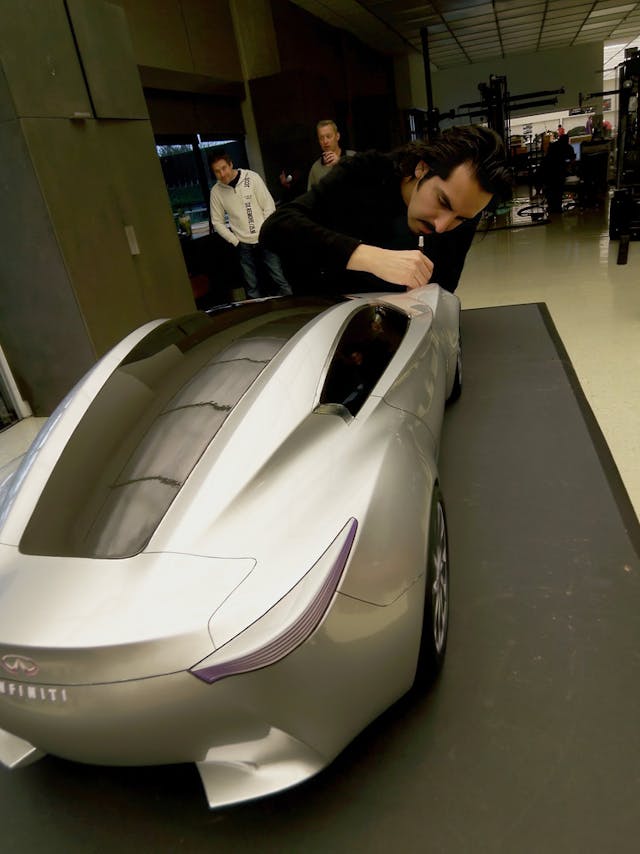
“Sometimes,” Nissan said, “a concept’s purpose is not to preview one production vehicle, but an entire lineup. That was certainly the case when Infiniti revealed its striking Essence concept at the 2009 Geneva Motor Show.”
Giovanny Arroba, senior director of design, says that the dramatic lines of string instruments inspired his first sketch for the show car. Now based in Japan, Arroba was a senior designer at NDA when he designed the exterior of the concept. “It was meant to be a symphony of shape, seduction, and beauty,” Arroba said. “I wanted to do something that was distinctive and had not been done before.”
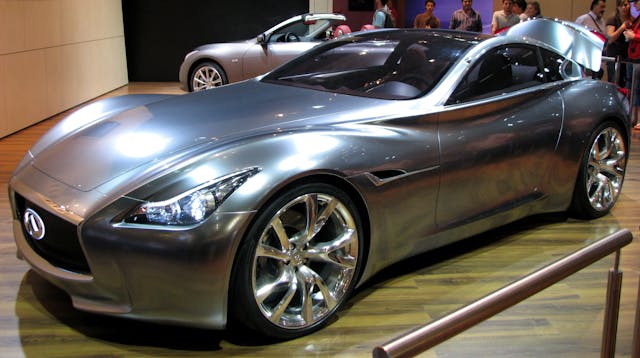
“The Essence had a substantial impact on Infiniti’s look throughout the 2010s, as designers regularly referenced it when styling production vehicles,” Nissan said.
“It’s an honor to become part of that story. That’s what drives you to do it again and again,” Arroba said. “When you work on a car like that, it’s magic.”
The Essence is the car Infiniti should have built. It hasn’t had a true signature model since the brand launched with the Q45 in 1990. The Essence could have given Nissan a lot of momentum when it needed it most.
Xmotion concept
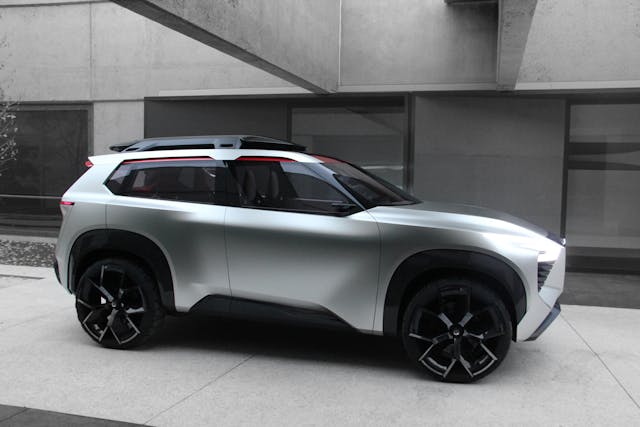
“When it came time to redesign the massively popular Rogue in the late 2010s, Nissan designers set out to preview its new look through the Xmotion concept,” Nissan said.
“We wanted to use [the Xmotion concept] as an exploration project for future design language,” said Lars Taubert, project lead designer, who was part of the Xmotion team at NDA. He said the designers leaned into Nissan’s Japanese DNA and created something that was equal parts tough and emotive.
“It’s mainly a communication tool. You get people used to changing shapes, and you can use them to communicate your future thoughts,” he said.
***
Check out the Hagerty Media homepage so you don’t miss a single story, or better yet, bookmark it. To get our best stories delivered right to your inbox, subscribe to our newsletters.

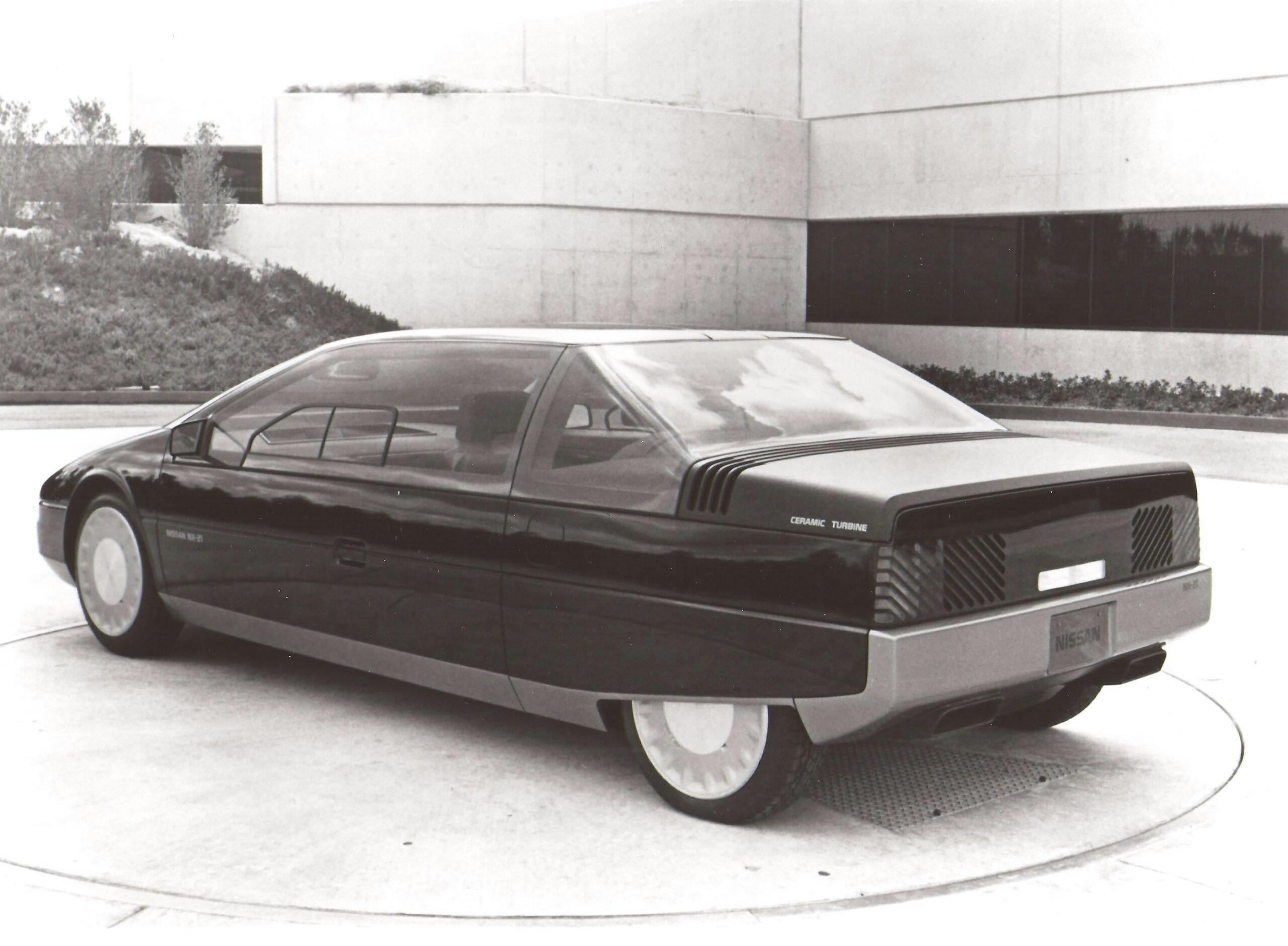
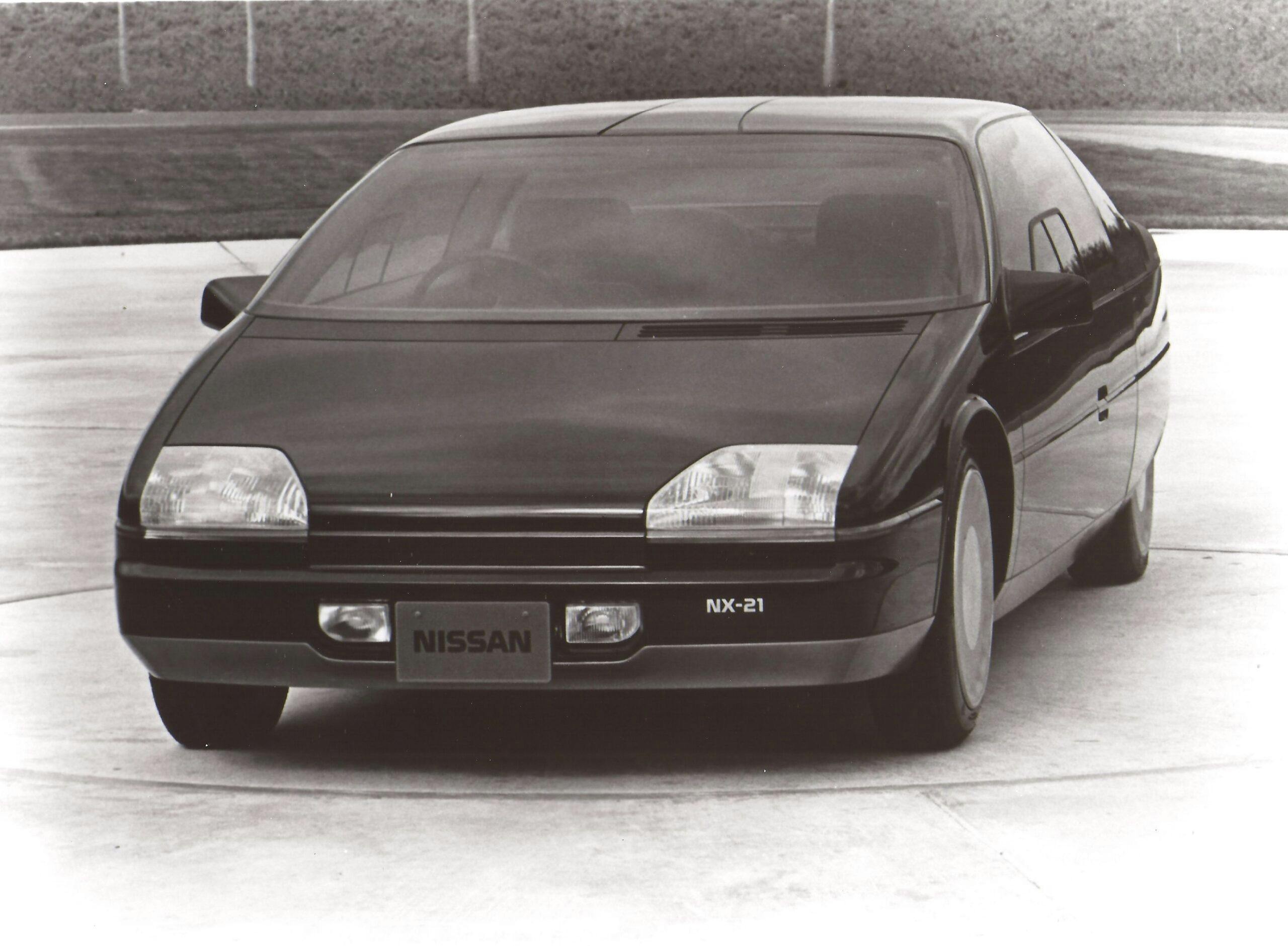
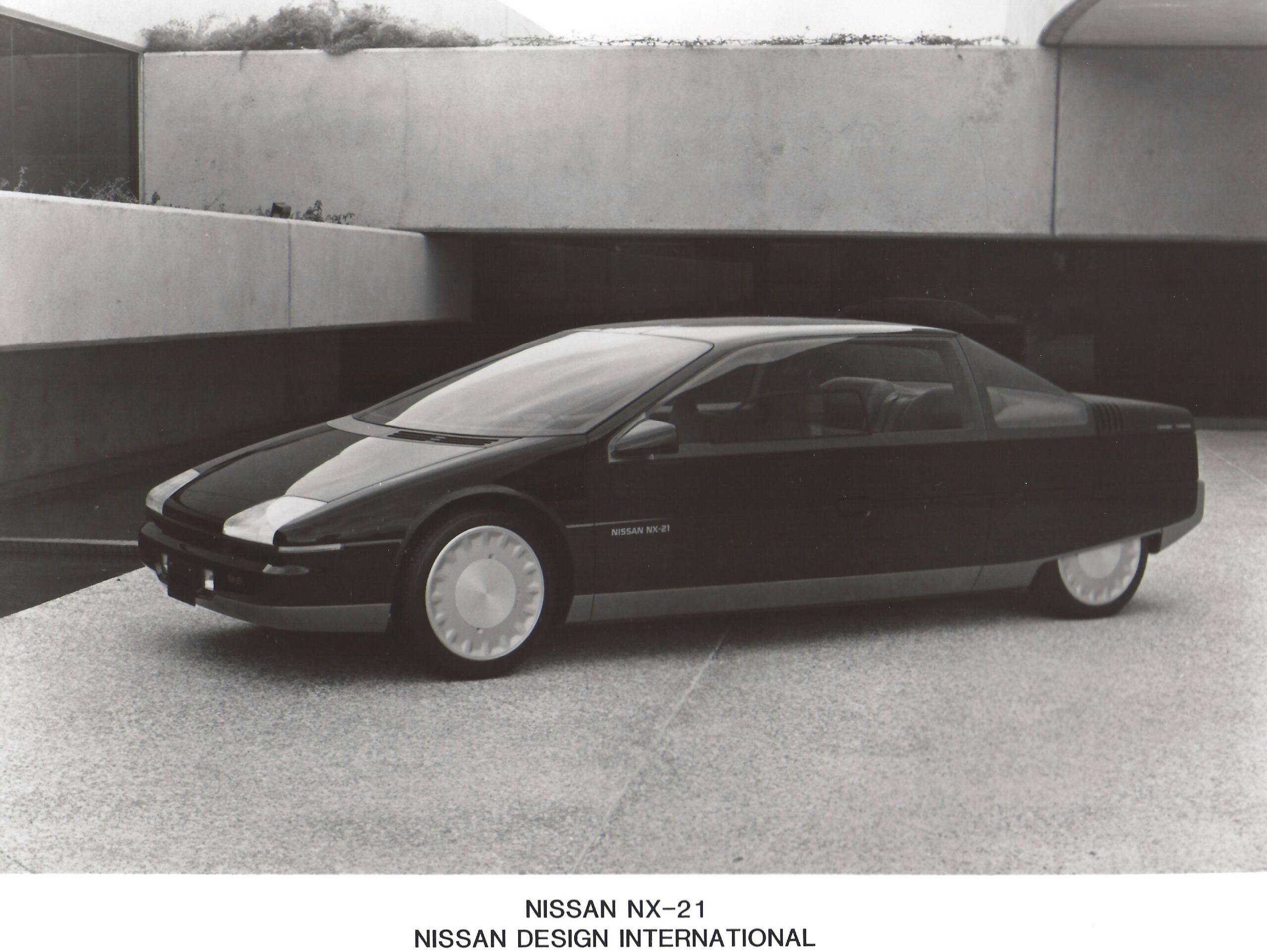

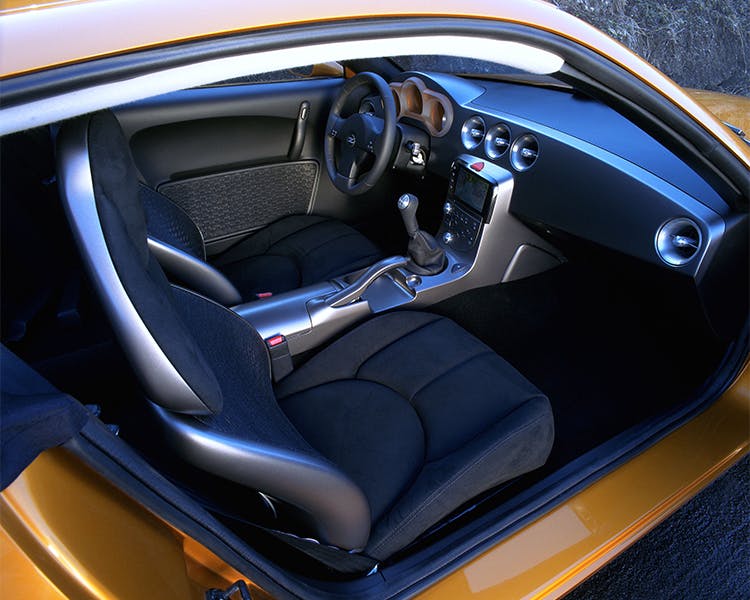


The Infiniti Essence is the car they should have built.
Didn’t see my favorite, the Datsun 510.
My xterra has been awesome. I’m a Nissan fan